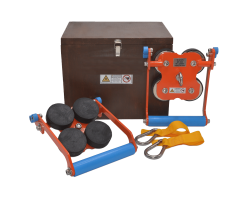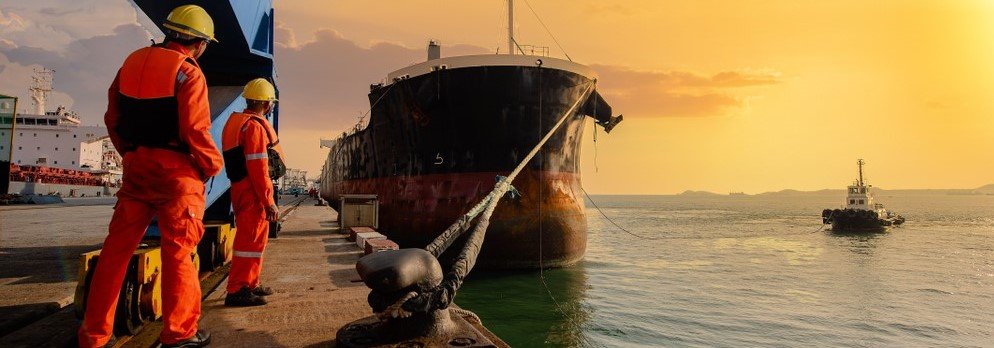Keeping Your Crew Safe: Exploring Pilot Ladder Operations and Addressing Equipment Challenges

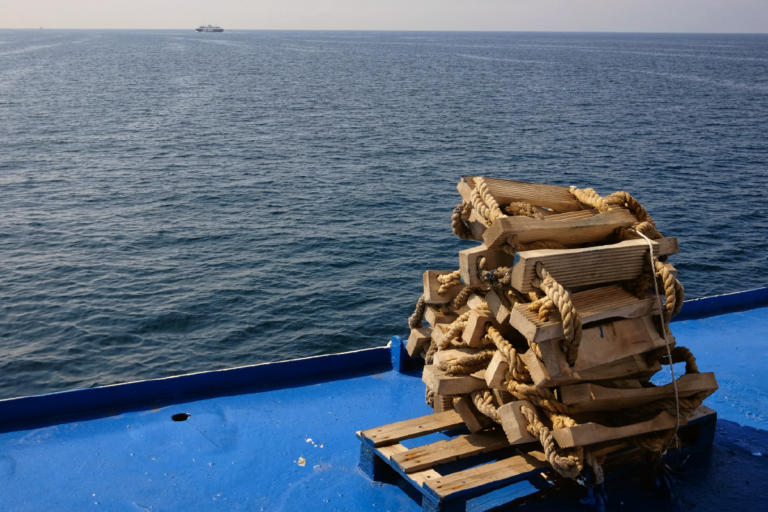
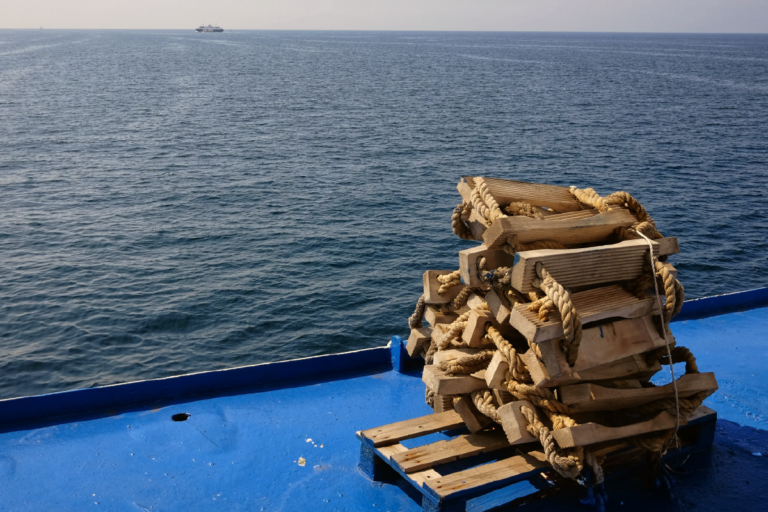
Introduction
Importance of Crew Safety in Maritime Operations
Ensuring the safety of crew members is paramount in maritime operations, where personnel often work in challenging and potentially hazardous environments, exposed to increased risks of accidents, injuries, or fatal incidents. From navigating rough seas to handling heavy machinery, maritime workers face numerous risks in their daily tasks. Therefore, implementing robust safety measures is essential to mitigate these risks and protect the well-being of crew members.
One critical aspect of crew safety involves the safe embarkation and disembarkation of personnel from vessels, particularly dangerous procedures where crew must move from land to vessel or between vessels.
Overview of Pilot Ladder Operations
Pilot ladders are vital tools in the maritime sector, facilitating safe movement for pilots and crew members as they embark and disembark vessels during routine operations. These ladders stand out for their unique design, featuring a spreader that enhances stability compared to regular embarkation ladders. Made primarily of durable hardwood, with the last four steps covered in rubber for better grip, pilot ladders ensure safe transfer in various conditions.
The need for pilot ladders is reinforced by international regulations such as SOLAS regulation V/23 and IMO resolution A.1045(27), updated by IMO MSC 88 in December 2010. These rules emphasise the importance of proper ladder arrangements and transfer procedures for new and some existing vessels.
In this article, we explore the essential role of pilot ladders in maritime (particularly crew) safety. We'll examine the key features of this equipment, alongside it's operational significance, and compliance with global standards— learning how this all together can ensure the safety of crews onboard vessels out at sea.
Understanding Pilot Ladder Operations
Definition and Purpose of Pilot Ladders
Pilot ladders are specialised maritime equipment designed to facilitate the safe transfer of pilots between ships and pilot boats during navigation. Their main purpose is to provide a stable and secure means of access for pilots / crews boarding or disembarking from vessels at sea. Pilot ladders play a crucial role in ensuring the safety of pilots, crew members, and vessels by minimising the risks associated with pilot transfer operations—in simplier terms, this is the movement of a member of crew from one vessel to another.
The design and construction of pilot ladders adhere to strict regulatory standards to ensure their reliability and effectiveness in various maritime conditions. By providing a standardised framework (or system) for pilot transfer operations, pilot ladders contribute to the overall safety and efficiency of maritime navigation, thereby supporting the smooth flow of wider 'macro' business movements, like international trade and commerce.
Key Components and Features:
- Durable Construction: Pilot ladders are constructed using hard wood steps, typically made from durable materials such as beech wood. This ensures the longevity and reliability of the ladder, even under harsh maritime conditions.
- Rubber-Coated Steps: The last four steps of the pilot ladder are coated with rubber to provide enhanced foot grip and stability for pilots during boarding and disembarkation. This feature improves safety by reducing the risk of slips or falls.
- Spreader and Rope Material: The spreader, which maintains the distance between the ladder steps, is typically made of hardwood (beech wood), ensuring structural integrity and stability. The rope used in pilot ladders is often 4-strand manila rope, known for its strength and durability in maritime environments.
- Step Thimbles: Step thimbles, also made of hardwood (beech wood), are used to reinforce the connection between the steps and the ropes, enhancing the ladder's load-bearing capacity and longevity.
- Aluminium Rope Clamp: Aluminium rope clamps are employed to secure the ropes to the ladder structure, providing a reliable attachment point that withstands the forces exerted during pilot transfer operations.
- Certifications and Compliance: Pilot ladders are marked with the Istituto Giordano Wheelmark, indicating compliance with international standards and regulations, including IMO Res. A1045(27), MSC/Circ. 1428, ISO 799 (2004), and SOLAS 74 Convention as amended, Regulation V/23 and X/3. These certifications ensure that the ladder meets rigorous safety and quality standards for maritime use. (https://pilotladdersafety.com)
The combination of these components and features ensures that pilot ladders provide a safe, reliable, and durable means of access for crews to embark and disembark vessels during these personnel transfer events.
Regulatory Framework: Compliance with SOLAS and IMO Standards
As previously stated in the article, pilot ladders play a critical role in ensuring the safe transfer of pilots between vessels and are subject to stringent regulations and standards set forth by the International Maritime Organisation (IMO) and the International Convention for the Safety of Life at Sea (SOLAS). Compliance with these standards is essential to ensure the safety of maritime operations and the protection of personnel involved in pilot transfer activities.
- SOLAS Regulations: The SOLAS Convention, established by the IMO, sets forth comprehensive regulations aimed at ensuring the safety of shipping and preventing accidents at sea. SOLAS Regulation V/23 specifically addresses the requirements for pilot transfer arrangements, including the design, construction, and maintenance of pilot ladders. Compliance with SOLAS regulations is mandatory for vessels over 500 gross tonnage (GT) and is enforced by flag states through regular inspections and certifications (IMPA, et al)
- IMO Guidelines: The IMO has also developed guidelines to supplement SOLAS regulations and provide additional guidance on the proper design, construction, and use of pilot ladders. IMO Resolution A.1045(27) and MSC/Circ. 1428 outline detailed recommendations for pilot ladder arrangements, including specifications for ladder dimensions, materials, and rigging procedures. Compliance with IMO guidelines ensures that pilot ladders meet international standards for safety and reliability.
- ISO Standards: In addition to SOLAS and IMO requirements, pilot ladders may also adhere to standards set by the International Organisation for Standardisation (ISO). ISO 799 (2004) and ISO 799-1 (2019), specify technical requirements and testing procedures for pilot ladders, ensuring consistency and quality in their design and manufacture. Compliance with ISO standards further enhances the reliability and performance of pilot ladders in maritime operations.
- Istituto Giordano Wheelmark: The Istituto Giordano Wheelmark is a symbol of approval granted to pilot ladders that meet SOLAS and IMO standards for safety and quality. The Wheelmark certification indicates that the pilot ladder has undergone rigorous testing and evaluation by a recognised certification body, affirming its compliance with international regulations.
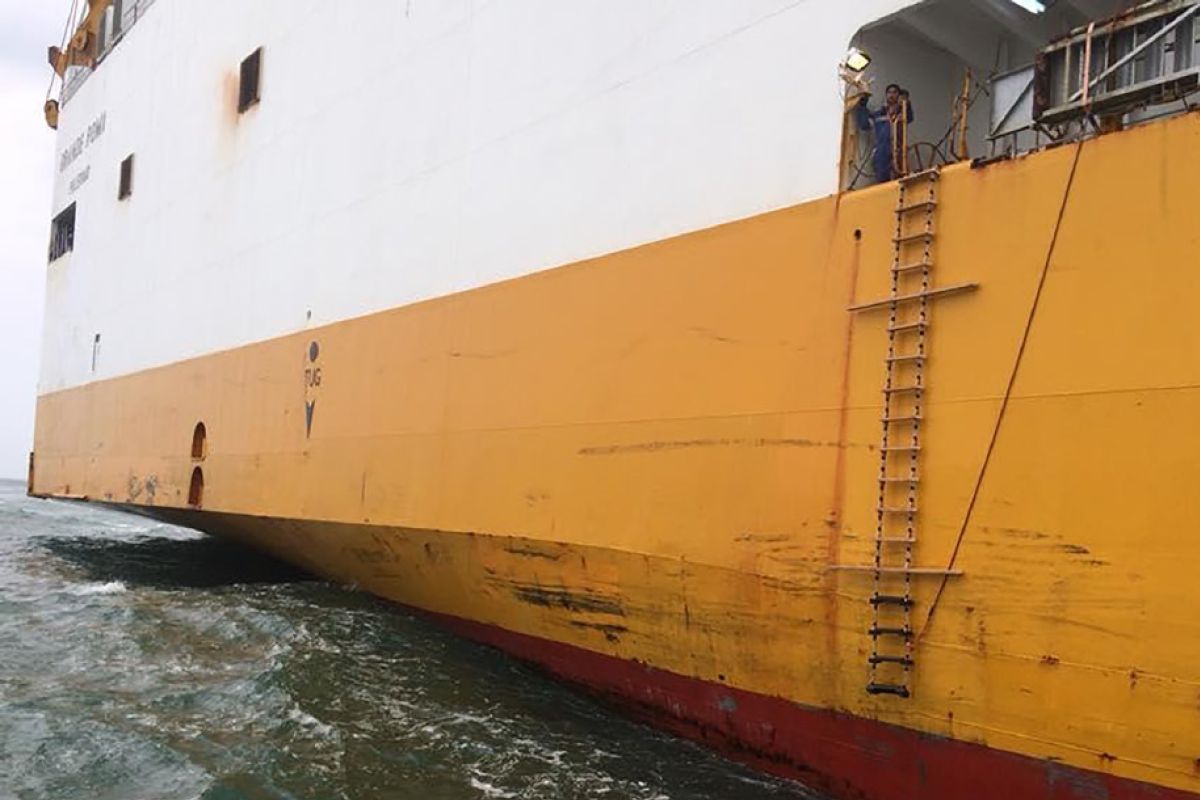

Vital Challenges in Pilot Ladder Operations
Pilot ladder operations involve various complexities, requiring consideration of factors like crew training, equipment familiarity, weather conditions, and visibility, which can pose challenges during their use. Understanding and addressing these challenges is crucial for ensuring the well-being of crew members and the successful transfer of pilots between vessels.
Two primary challenges in pilot ladder operations are the frequency and significance of pilot ladder incidents, as well as the impact of improper deployment on crew safety:
Frequency and Significance of Pilot Ladder Incidents
The issue of unsafe pilot ladders has been highlighted in the MAIB's 2021 Annual Report, emphasising its significance within the maritime industry. In 2021, nearly 200 reports were received, revealing that 87% of the ladders were rigged incorrectly, with the remainder found to be materially defective. (Gov.UK, 2022)
During Maritime Safety Week, MAIB inspector Bill Evans emphasized the importance of improving pilot ladder safety. Marine pilots play a critical role in guiding vessels in and out of harbors, making it essential for pilot ladders to be correctly rigged and supervised by the crew. Inspections before and after ladder use are crucial to ensure their safety, checking for factors such as ladder condition, step alignment, and date of manufacture. (Gov.UK, 2022)
The MAIB's survey of 105 UK Competent Harbour Authorities in 2022 uncovered over 400 incidents during 96,000 pilot transfers using ladder systems. Notably, just over half of these incidents were reported to the MAIB, indicating potential underreporting. One severe incident resulted in a fractured ankle when a pilot lost grip on a handhold stanchion due to its unsuitability (MAIB, 2022)
Analysis of reported incidents revealed various root causes, including improper securing methods, poor ladder material condition, unfit handhold stanchions, and non-compliance issues related to ladder length and rigging errors. The implications of these incidents extend beyond individual safety concerns, with potential disruptions to maritime operations, vessel damage, legal liabilities, and reputational harm to shipping companies. Urgent action is required to address these persistent challenges and ensure the safety of pilot ladder operations.
Impact of Improper Deployment on Crew Safety
The improper deployment of pilot ladders poses a significant risk to crew safety during embarkation and disembarkation procedures. When pilot ladders are not correctly rigged, secured, or maintained, crew members face increased hazards during transfer operations. Common issues such as tangled ropes, damaged steps, or unstable rigging can compromise the stability and integrity of the ladder, increasing the likelihood of accidents and injuries.
Improperly deployed pilot ladders can also undermine the effectiveness of safety measures designed to protect crew members, such as life jackets, release units, safety lines, and 'handholds' (pilotladdersafety.com) Inadequate training or oversight in ladder deployment procedures further exacerbates the risk, as crew members may lack the necessary skills or awareness to identify and address potential hazards. As a result, crew safety may be compromised, leading to accidents, injuries, or near misses during pilot transfer operations.
Hypothetical Case Study: Challenges of Pilot Ladder Operation
- Incident: In the early hours of the morning, a large cargo vessel prepares to receive a pilot for navigation through a narrow channel. As the pilot boat approaches the vessel, the crew on the cargo ship lowers the pilot ladder into position. However, due to poor visibility and miscommunication from the crew, the ladder is deployed at an incorrect angle, causing it to swing away from the vessel's side!
- Cause: The improper deployment of the pilot ladder is attributed to a combination of factors, including inadequate training of crew members on ladder deployment procedures, lack of clear communication between the pilot boat and the vessel's crew, and challenging weather conditions.
- Impact: As the pilot boat attempts to maneuver closer to the swinging ladder, the pilot loses footing and slips into the water. Despite wearing a life jacket, the pilot struggles to stay afloat amidst the turbulent waves. The vessel's crew initiates a swift rescue operation, deploying lifebuoys and safety ropes to assist the pilot. However, the delay in rescue efforts and the pilot's prolonged exposure to cold water lead to hypothermia and exhaustion.
- Lessons Learned:This incident shows the importance of effective communication, proper training, and situational awareness in pilot ladder operations. The scenerio highlights the need for crew members to receive a certain standard of equipment training on ladder deployment techniques and to maintain clear communication channels with pilot boats during transfer operations—especially in adverse weather conditions.
Additionally, it emphasises the significance of swift and coordinated rescue efforts in the event of a pilot overboard situation, highlighting the need for crew members to be proficient in emergency response procedures at all times.

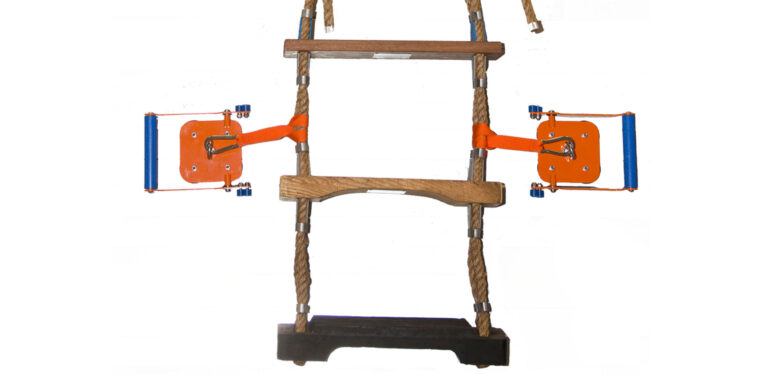
Addressing Challenges: Strategies for Crew Safety
Like many other features of a vessel, pilot ladders are used so frequently that we can often forget the risks that their improper operation can carry. Nonetheless, while there are many incorrect ways to set up a pilot ladder, there is only one safe one – and that’s something that we all need to remember
- (Erik Mooij, 2019)
In response to the challenges highlighted by the pilot ladder scenario discussed earlier, it ia evident that mitigating the risks associated with pilot ladder operations are paramount to ensuring the safety of crew members. Maritime stakeholders must, therefore, prioritise the implementation of comprehensive strategies that centre around inspection, maintenance, and crew training. By addressing these critical aspects, shipping companies, commercial fishing fleets and others can improve the effectiveness of their pilot ladder operations, whilst minimising the likelihood of accidents or incidents.
As highlighted by Erik Mooij, Group Senior HSES Manager at Lloyd's Register, in his news article exploring the challenges with pilot ladders, comprehensive strategies are essential for ensuring their safe operation at all times. Mooij's observations mark the critical importance of proper inspection, maintenance regimes, and crew training programs in addressing the risks associated with pilot ladder operations. Moreover, his insights align with current industry best practices and regulatory standards, providing valuable guidance for maritime stakeholders seeking to enhance safety protocols and minimise accidents or incidents during pilot ladder operations (Lloyd's Register, 2024). We can divide these practices and regulatory standards into a few sections:
Proper Inspection and Maintenance Regimes
Regular inspection and maintenance of pilot ladders are essential to identify potential hazards and ensure the structural integrity of the equipment. Shipping companies should establish robust inspection regimes that encompass thorough checks before each use, as well as periodic assessments conducted by qualified personnel.
Key components to include in inspection regimes are:
- Structural Integrity: Inspecting the ladder for signs of wear, corrosion, or damage to the steps, spreaders, and ropes.
- Securing Mechanisms: Ensuring that ropes are securely fastened to the ladder and properly attached to the vessel's structure.
- Material Condition: Checking the condition of wooden steps, spreaders, and thimbles, as well as the integrity of rubber coatings for foot grip.
- Certification and Documentation: Verifying the validity of certificates, including MED approvals, manufacturer specifications, and inspection records.
Regular inspections play a crucial role in promptly identifying and addressing any issues with pilot ladders. By promptly addressing these, shipping companies can effectively maintain the reliability and safety of pilot ladders, thereby reducing the risk of accidents and injuries during transfer operations.
Comprehensive Crew Training Programs
Crew members involved in pilot ladder operations must receive comprehensive training on ladder deployment procedures, safety protocols, and emergency response techniques. Shipping companies should develop tailored training programs that cover:
- Ladder Deployment: Proper techniques for deploying, rigging, and securing pilot ladders in accordance with SOLAS, IMO, and ISO standards.
- Safety Procedures: Guidelines for maintaining clear communication with pilot boats, using safety equipment, and identifying potential hazards during transfer operations.
- Emergency Response: Training crew members in emergency response procedures, including pilot overboard scenarios, man overboard drills, and rescue operations.
- Regulatory Compliance: Familiarising crew members with relevant SOLAS regulations, IMO guidelines, and industry best practices for pilot ladder operations.
Implementation of Crew Management Systems
Effective crew management is crucial for ensuring the safety and efficiency of pilot ladder operations. This involves:
- Recruitment and Training: Rigorous recruitment processes ensure crew members have the necessary skills and certifications. Comprehensive training programs familiarise them with ladder procedures, safety protocols, and emergency responses.
- Competency Assessment: Regular evaluations verify crew members' proficiency and adherence to safety standards through practical assessments and simulations.
- Fatigue Management: Policies and procedures manage crew work schedules, rest periods, and workload distribution to prevent fatigue-related incidents.
- Technology Integration: Digital solutions such as onboard monitoring systems and electronic record-keeping platforms enhance operational efficiency, risk assessment, and decision-making.
- Continuous Improvement: Regular reviews and feedback foster a culture of learning and innovation, allowing companies to adapt to evolving challenges and maintain safety standards.
Addtional Safety Equipment for Pilot Ladders (Pilot Ladder Magnets)
The incorporation of other equipment such as pilot ladder magnets offers a notable improvement in crew safety during pilot ladder operations. These magnets function as secure anchor points for the ladder on the vessel's side, delivering significant holding force when correctly positioned. Integrating pilot ladder magnets into current safety protocols presents an opportunity for shipping companies to reduce risks associated with pilot ladder operations and bolster overall crew safety (T-ISS, 2021)
Pilot ladder magnets provide numerous advantages when integrated into crew safety strategies:
- Enhanced Stability: The magnets provide additional stability and security by securely anchoring the ladder to the vessel's hull, reducing the risk of slippage or dislodgment during transfer operations.
- Easy Operation: Designed for easy operation, pilot ladder magnets offer a simple yet effective solution for securing the ladder in place. The handle of the magnet serves as a lever, enabling easy release from the hull when necessary.
- Accident Prevention: By preventing unexpected detachment from the hull, pilot ladder magnets help prevent accidents that could result from ladder instability or improper rigging. This includes incidents where modifications to the magnets have led to unintended consequences.
- Regulatory Compliance: Integrating pilot ladder magnets into safety protocols aligns with industry best practices and regulatory standards, including those outlined by the International Maritime Organisation (IMO) and national maritime authorities.
- Risk Mitigation: Regular inspection and maintenance of pilot ladder magnets, along with adherence to manufacturer specifications and regulatory guidelines, further mitigate risks associated with their use.
The use of pilot ladder magnets is a proactive step in improving pilot ladder operations and crew safety. By including these magnets in safety plans, shipping companies can enhance their safety measures. This not only reduces the risks of pilot ladder operations but also emphasises the need for better crew training. Ensuring crew members are trained in using these magnets effectively adds an extra layer of safety during ladder deployment.
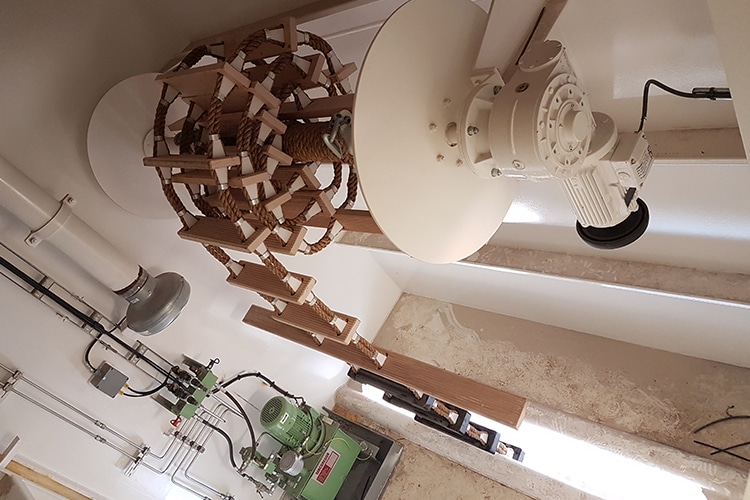
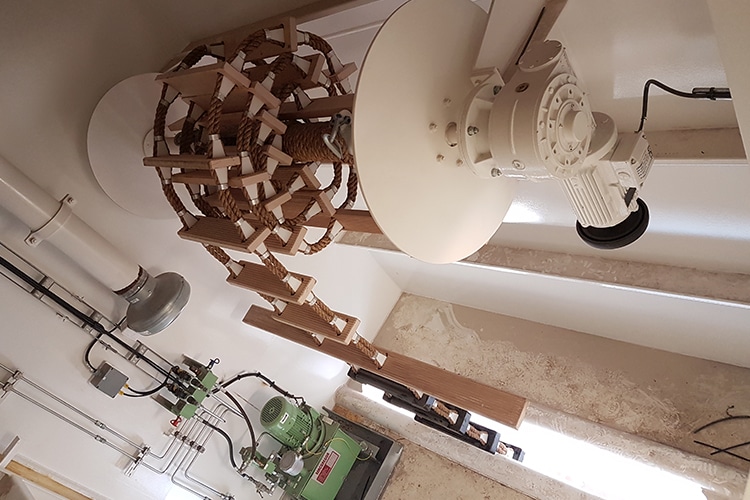
Conclusion
Crew Safety in Maritime Operations
As discussed, the maritime and sea-faring operations, the safety of crew members and pilots during pilot ladder operations is of paramount importance. Throughout this exploration, we've look at the critical role pilot ladder safety plays in facilitating secure transfers between vessels and highlighted the multifaceted challenges associated with these operations—where it is imperative to acknowledge the pressing need for action; prioritising crew safety in all maritime activities.
By implementing robust inspection and maintenance regimes, comprehensive crew training programs, and effective crew management systems, we can ensure the risks inherent in pilot ladder operations are reduced and improve the well-being of maritime personnel during these operations. It is also important to refer to fast-changing regulations from governing organisations when doing so.
Looking to the future, ongoing innovations and improvements in technology, materials, and operational procedures hold promise for enhancing pilot ladder safety even further. Embracing these advancements and fostering a culture of safety will be essential in advancing the reliability and effectiveness of pilot ladder operations in the years to come.







